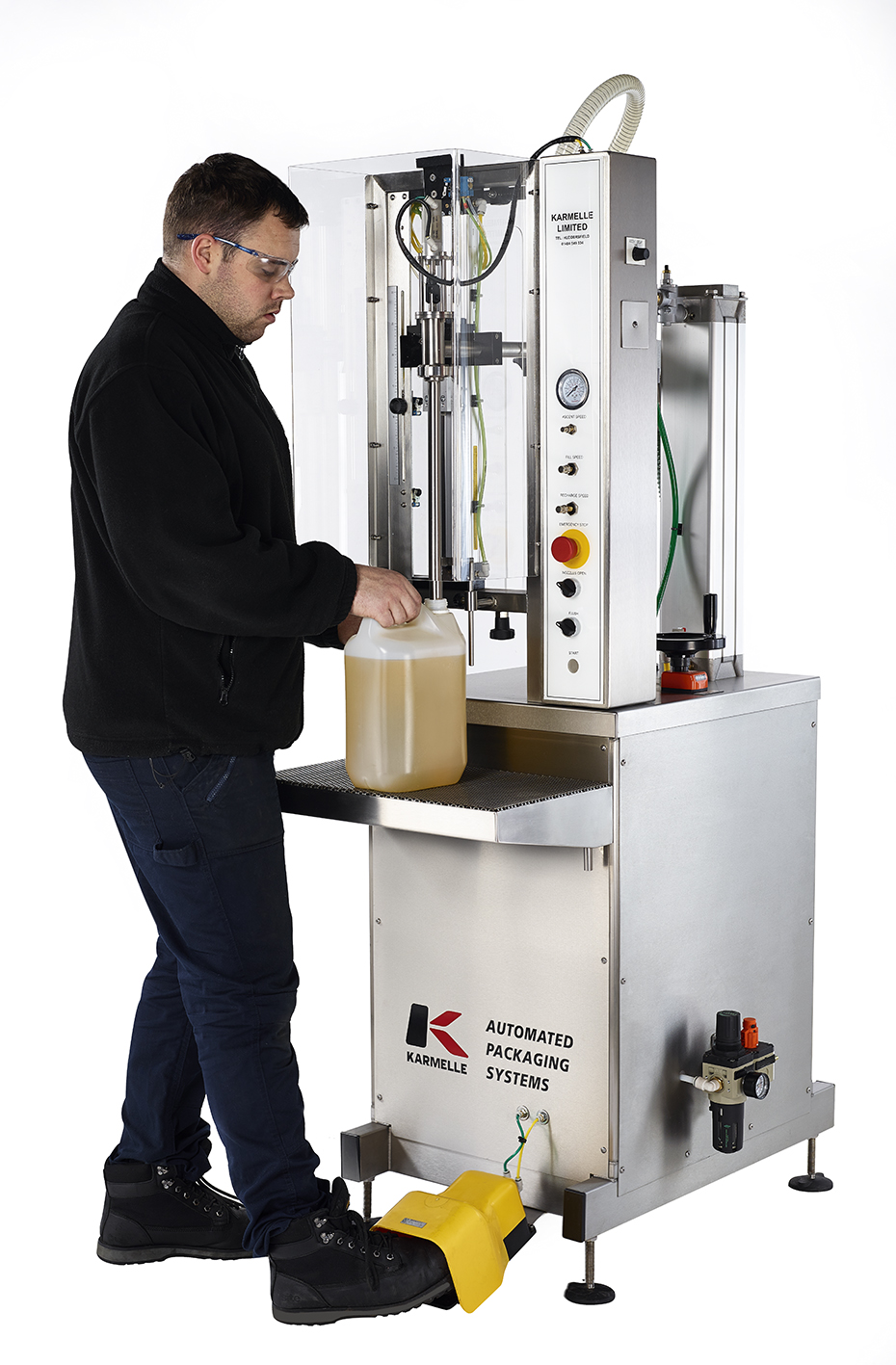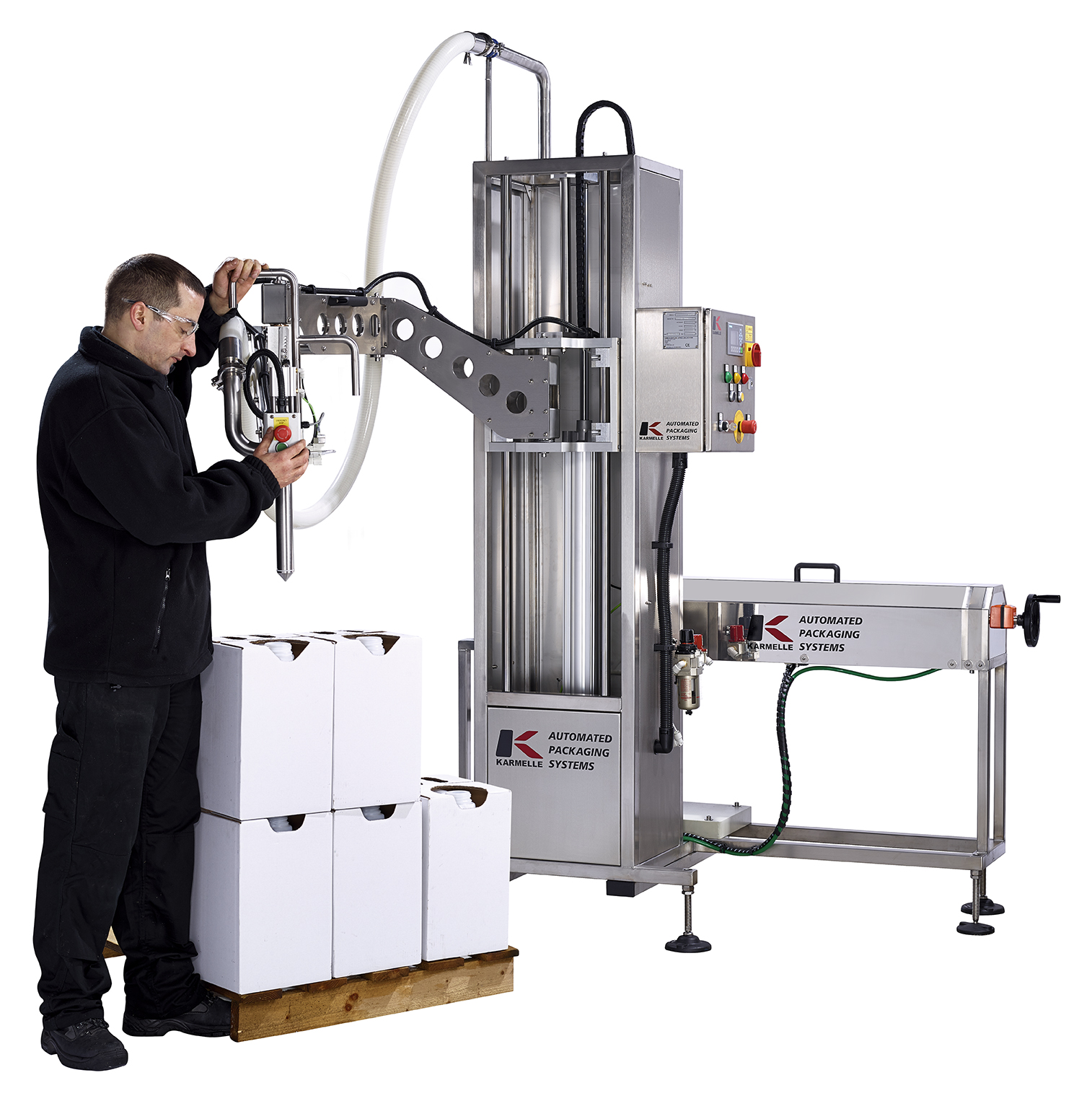The hygiene industry continues to play an important role in our fight against Coronavirus – and, since the onset of the pandemic, Karmelle have been approached by numerous manufacturers looking to streamline or scale-up production. With many exploring automation for the first time, we asked our design team to explain what they might need from a liquid filling machine. Sourcing equipment for cleaning products? Here are some points to consider:

Complete filling line with conveyors
What kind of filling machine do I need?
The type of filling equipment required depends in part on the speeds you are looking to achieve and batch-sizes you are producing. Perhaps you’re manufacturing a limited amount of hand-sanitiser? If so, a semi-automatic Bench Top Filler might be the best option, and could be repurposed for different products in future.
Companies looking to increase production should consider a larger semi-automatic machine, like the VIPF500.
For large-scale production and high speeds, we recommend modular, fully-automatic filling machinery, which can be integrated with other packaging equipment to form a complete line.
The machinery’s key features must be chosen to suit your product. Factors like its viscosity, flammability and the extent to which it foams should be taken into account. If you will be packaging a range of products, ensure that equipment can be configured to accommodate different bottle variants and liquid viscosities.

Single head VIPF500
Selecting the right materials for a potentially aggressive product
Certain cleaning chemicals react with other materials, and can cause standard machine components to degrade quickly. Therefore, all parts that will come into contact with the product should be checked for suitability; we usually recommend materials like stainless steel, PTFE, titanium, glass and PVC.
In addition to this, some chemicals give off vapours that can react with filling machinery’s framework and windows, causing them to crack and discolour. As with parts coming into contact with the product, we must select the correct materials with the correct finish. Flame polished edges create stress in a material, which will ‘stress craze’ when it comes into contact with aggressive agents.
Avoiding spillages or contamination when filling cleaning products
While our filling machines are highly accurate, we recommend drip trays to control any excess product or product-spills. If the filler will be part of a complete bottling line, conveyor wash boxes are available on request; they keep the conveyor chain clean and prevent contamination with the other conveyors downstream. The conveyor chain should also reviewed for compatibility with the product.

Boom Arm Filling Machine
ATEX-rated machinery
Due to the flammability of products, some chemical cleaning filling equipment needs to be ATEX compliant. All parts of the machine must be assessed, and suitably rated equipment used, as per the DSEAR report provided by the customer.
If you have a question about chemical filling equipment, or would like to discuss your own project, please don’t hesitate to contact our team on +44(0)1484 533356 or at karmelle@gmail.com.
